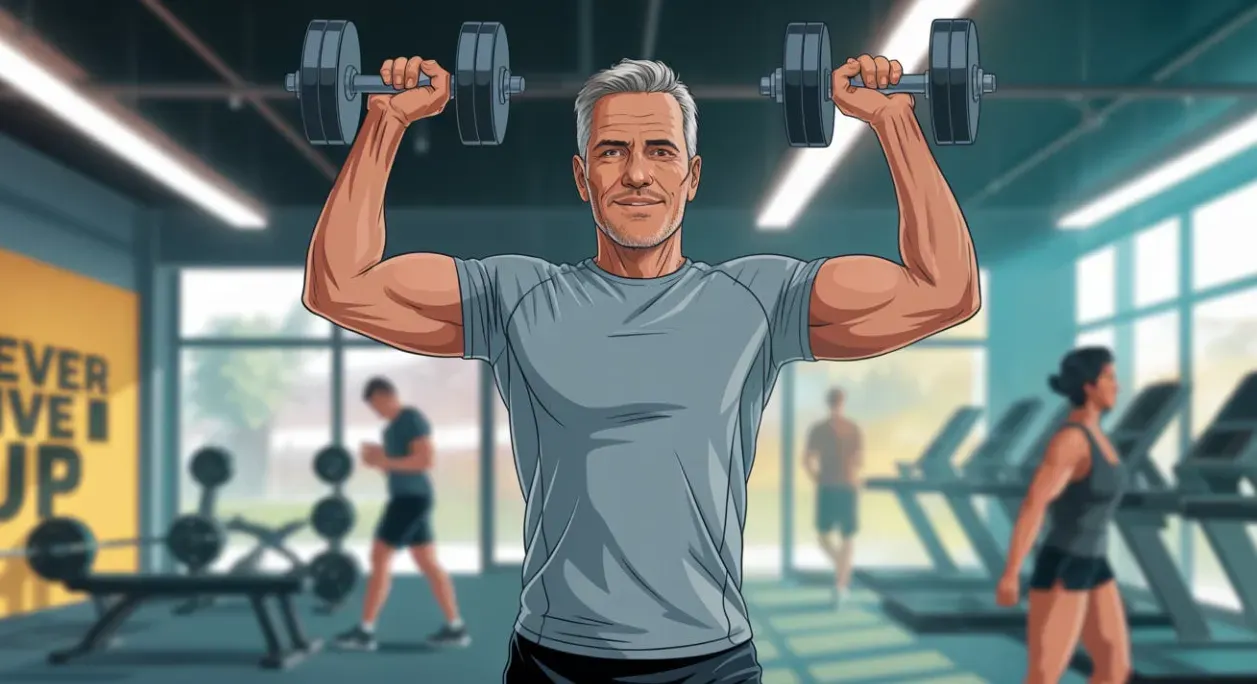5 Things No One Tells You About Building Muscle After 50

Most fitness advice is aimed at twenty-somethings who recover like machines and can eat whatever they want. But if you're over 50 and trying to gain muscle, that playbook won’t work. In fact, it can backfire. What you need is brutally honest, no-BS insight into how your body has changed—and how you can still thrive with the right strategy.
Muscle building after 50 is absolutely possible, but it’s a different beast. You need precision, patience, and a whole lot of smart planning. Let's break down five essential truths that no one talks about—truths that will make or break your progress in the gym, in the kitchen, and in your recovery.
Why Building Muscle After 50 Requires a Different Strategy
The fitness world rarely tells the truth: after 50, everything has to be dialed in if you want to build muscle. In your 20s, you could half-ass your diet, skip sleep, and still make gains. Not anymore. After 50, you’re working against anabolic resistance, slower recovery, and a higher risk of injury.
That means training smart is no longer optional. Your workouts need structure, intensity, and frequency—but also balance. You have to prioritize full-body movements, track your progressive overload, and be strategic with rest. It’s no longer just about “showing up”—you have to execute with discipline if you want the needle to move.
Anabolic Resistance: The Silent Muscle Blocker After 50
After 50, your body becomes resistant to muscle growth. This isn’t a mindset issue—it’s a biological fact. It’s called anabolic resistance, and it means your muscles don’t respond to protein, training, or recovery as effectively as they once did. Gains that used to come easy now demand perfect coordination of training, nutrition, and sleep.
You need a high-protein diet—ideally 1.2 to 1.6 grams per kilogram of bodyweight per day. You need to train with intensity and full-body frequency. And you need deep, uninterrupted sleep. Sloppy habits that didn’t matter at 25 are deal-breakers at 55. But here’s the good news: when everything is aligned, results still come—sometimes faster than you expect.
Strength Gains vs. Muscle Growth: Why the Scale Lies
Here’s a mind-bender: you can get stronger without actually gaining new muscle. Strength isn’t just about size—it’s about coordination. It’s the mind-muscle connection. When you first start lifting, your nervous system adapts quickly. You become more efficient at using the muscle you already have—even if that muscle doesn’t grow.
This explains why in the first few weeks, you may lift heavier but still look the same in the mirror. That’s not failure—that’s your nervous system rewiring itself. Over time, consistent tension and calorie surplus lead to hypertrophy. But don’t expect visible change overnight. The scale might stall, but your body is learning. Keep going.
Why a Calorie Surplus Is Mandatory for Long-Term Progress
In your first few months of training, your body responds like a beginner. You can build muscle in almost any state—even a calorie deficit. But that grace period doesn’t last. After a few months, you need to eat more than you burn to build new tissue. That’s right: a caloric surplus becomes mandatory.
You don’t need to eat like a bodybuilder. Just an extra 100–250 calories per day over maintenance, mostly from high-quality protein and carbs, is enough. If you’re gaining fat too quickly, scale it back. But if you’re not eating enough, progress will stall—no matter how hard you train. Precision here makes the difference between spinning your wheels and true transformation.
Genetics Are Not an Excuse—But They Do Shape Your Outcome
Everyone’s obsessed with comparing results. But the truth is, genetics play a massive role in how quickly and how much muscle you build. Some people grow like weeds. Others have to grind for every inch. After 50, those differences become even more pronounced due to individual differences in hormone levels, recovery capacity, and muscle fiber type.
Still, genetics are not your destiny. They’re just your starting point. Even modest muscle gains can drastically improve balance, metabolic health, and mobility. That 3–5 lbs of muscle you gain over a year? It could be the difference between independence and fragility in your 70s. Play the long game, not the comparison game.
Your Real Goal Over 50 Isn’t Muscle—It’s Avoiding Injury
This might sound counterintuitive, but muscle isn’t your primary goal after 50. Staying injury-free is. You can’t build muscle if you’re sidelined by a torn rotator cuff or a bulging disc. Your margin for error is smaller now—one bad lift can set you back for months, or worse, permanently.
Warm up properly. Leave a rep or two in the tank. Work on mobility, especially in your hips, shoulders, and thoracic spine. Train with consistency, not ego. Remember: the person who stays in the game the longest wins. Avoid injury, and you earn the right to train year after year—and that’s when the real transformation happens.
Final Word: Long-Term Success Depends on Precision and Patience
Muscle after 50 isn’t about miracle programs or hacks. It’s about mastering the basics with relentless consistency. It’s about managing expectations, focusing on what matters most, and doing it week after week, year after year.
Perfection isn’t the goal—sustainability is. Train smart, eat with intention, recover like it’s your job, and stay humble. That’s the formula. And if you stick with it, you’ll prove to yourself—and everyone else—that age doesn’t get to call the shots. You do.
